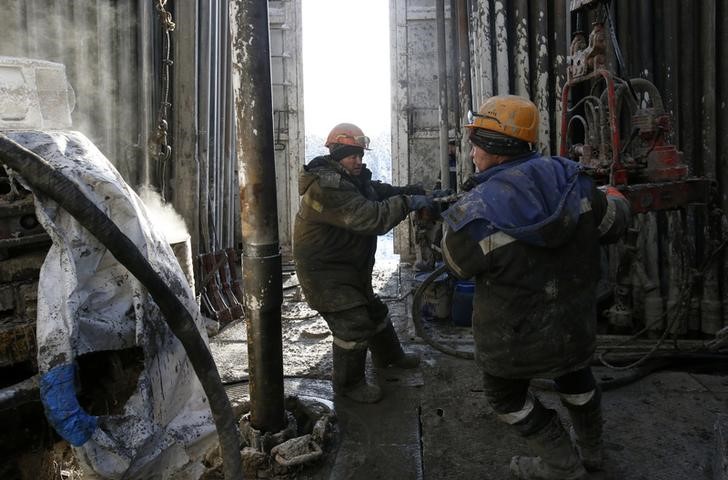By Barani Krishnan
Investing.com - For a third week running, oil bulls are hoping that the inventory drawdown story isn’t over yet in U.S. crude. But with Labor Day closing in and fewer days left in the summer driving season, it’s getting harder to put conviction to that hope.
Crude futures settled steady to slightly higher on Tuesday amid forecasts for a drawdown of 1.9 million barrels during the week ended Aug 16. In two previous weeks, there were straight builds of 1.6 million barrels and 2.4 million barrels in crude that were totally against analysts’ expectations.
New York-traded West Texas Intermediate crude settled a penny lower at $56.13 per barrel.
London-traded Brent crude, the benchmark for oil outside of the U.S., gained 36 cents, or 0.6%, to $60.10, returning above the key $60 per barrel mark.
In Monday’s trade, both WTI and Brent jumped about 2%, getting a boost from a positive spin on U.S.-China trade talks and reports of a new drone attack on a Saudi oilfield.
In Tuesday’s session, oil also got a boost from speculation that U.S.-China relations might once again be on the mend.
The United States said it would extend a reprieve that permits China’s Huawei Technologies to buy components from U.S. companies, signaling a slight softening of the trade conflict between the world’s two largest economies.
“It’s the ebbing and flowing of the U.S.-China trade war and some hope of economic stimulus that’s coming at these markets, including potential fiscal stimulus by the Germans,” John Kilduff, founding partner at New York energy hedge Again Capital in New York, told CNBC in an interview.
Notwithstanding Tuesday’s gains, concerns grew as to where last week's crude stockpiles would be as industry group American Petroleum Institute prepared to issue a snapshot of what the U.S. Energy Information Administration will report as official inventory numbers on Wednesday.
In theory, there is just another week left of peak summer driving demand left in the United States before the Sept. 2 Labor Day holiday.
If, for any reason, no crude drawdowns are reported between now and the next couple of weeks, then oil bulls' only hope of shoring up prices will be to bank on more stringent OPEC production cuts.
The Saudis hinted in recent weeks that they and the combined forces in OPEC will do anything to “rebalance” the market (in order words, slash production until they can turn the corner).
Yet, some analysts aren’t convinced at all that OPEC has enough wherewithal to keep this market higher.
Olivier Jakob, founder of the Petromatrix consultancy in Zug, Switzerland, is one of them, arguing that crude stocks are nearly unchanged for the first time since 2016.
“If Saudi Arabia wants to support stronger balances (prices), then it needs to let crude oil exports drop below 6.5 million barrels per day and towards 6.0 million bpd, something it has refused to do in 2014 or 2017,” Jakob said.
